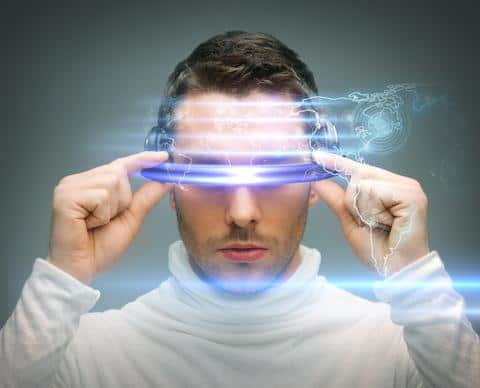2 weeks ago, a large, impressive looking box arrived on my doorstep. It looked a bit different from the usual Amazon boxes that arrive on our doorstep on an almost daily basis these days. And while getting something in a box always does seem to have a vague reminiscent feeling of Christmas, this one especially gave me some butterflies. Because the contents of this box I realize have the potential to change the way we do a lot of things, and they have the ability to alter the way we learn, the way we love, and the way we work. Except, nobody knows that yet.
Let me start out by saying – I work in technology (surprise surprise). I work with a premier global software organization that specializes in innovation, tasked with envisioning how technology can better our world in both our personal and professional lives. Specifically, I am a subject matter expert in how to train technology professionals – helping them understand how to fully utilize the new features and functionality that have been purposely designed for them to exceed their own expectations. In return, the company I work for is able to educate their customer base more efficiently, build teams more quickly, and ultimately sell more effectively. Education, even in a thriving global technology organization is absolutely critical for the bottom line.
So back to the story. Once the box had been opened, it revealed its contents inside – a rather complex jumble of wires and components called the “HTC Vive.” If you’re not familiar with the recent revolution in virtual reality, then you’ll likely not have any idea what I’m referring to. As I start taking each piece out of the box, I find a technology platform that has the ability to teleport you into totally different worlds. Think about early versions of the holodeck on Star Trek – except we’re in the 23rd century, we’re still in the 21st, and this is really happening now.
Once I had everything set up in our living room (which was no easy task mind you), I turned on the overly high-powered PC required to run this thing, and put on the headset for the first time. As I was sitting there, I realized I was sitting on the crow’s nest of a sunken ship, 200 feet under the surface of the ocean. As I looked up (towards the ceiling), I was able to clearly see the sun, shining through the waves so far above me and casting a beautiful light across the bow of the shipwreck I stood upon. As I scanned around, I was immediately overwhelmed by sea life all around me – reef fish, manta rays, turtles interested in my presence there and swimming just inches out of reach. After a minute or so, I heard large bubbles to my far left, and wondering what it was, I turned to see an enormous beast swimming towards me. It was a 100 ft. long blue whale, curious what I was doing in its environment.
I fell backwards to the floor of my living room because of how overwhelmed my senses were from this moment. To have all of your emotions – fear, excitement, anticipation, curiosity, not to mention your physical senses like sight, touch, and hearing all engaged at the same time in such a deeply immersive experience is totally new to me. If I didn’t “know” for a fact that I was actually in my living room, I may have had a panic attack. I realized in that moment that this could have profound impacts on the way we live life – both for good and for bad, as is the case with any new technology it seems.
Of course, my mind immediately started wondering. How could this change how people learn? How could this alter the process of education, making it more interesting, more engaging, more useful? Could this technology allow us to make the world a better place by influencing the way we absorb information, educate ourselves, and even plan our futures?
Think about this. When you were in high school, did you know what you wanted to do for a living? Most did not – certainly I was one of those. And as we approached graduation, we were expecting to pick a university, a major, a discipline that we would spend the rest of our lives pursuing. Only, we had no idea what that really looked like on a day-to-day basis or if we would really enjoy it. Could this technology let a high school student better understand what it’s like to be a marine biologist? Or a doctor? Or a teacher? If so, you could dramatically influence the ability to identify skills, talents, and passions at an early age, and help young adults find their ultimate career path more quickly, avoiding years of bumping around, changing majors in college, and wasting time and money and time along the way. Not only that, but technology professionals could be trained in how to use that new sales tool being rolled out in half the time, by building a course in one of these virtual worlds – rather than walking them through yet another PowerPoint presentation.
Now, is this all pie-in-the-sky thinking here? Possibly. But maybe it isn’t. Perhaps we’re headed into a new era where learning doesn’t just include reading a book, attending a lecture, or describing ideas, images, and concepts in a 2-dimensional framework. Maybe the time has come where you can now experience anything you can imagine right in your living room, and as a result, expand your potential and your passions. Virtually reality is, this very minute, crossing both personal and professional boundaries that have the potential to take us to places we never thought possible…without leaving our home or office. The future is here, ready or not.

